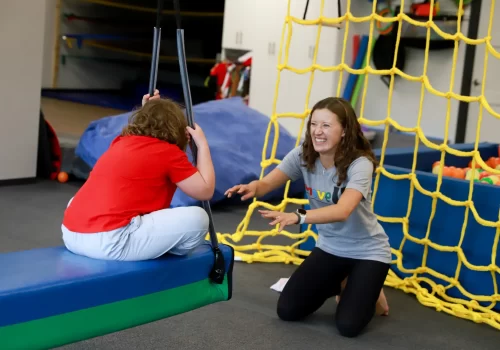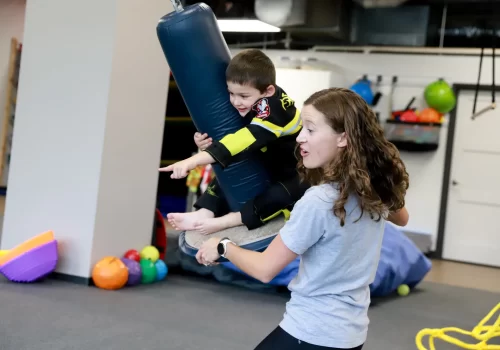A lot of a child’s development occurs within their home. Therefore, creating an enriching and sensory-friendly home environment can significantly benefit a child’s overall well-being as well as help them to thrive. This is especially true for a child with sensory processing challenges. Creation of the space involves providing opportunities for play, exploration, and discovery within a safe and well-organized environment while offering consistent emotional support (Ayres & Robbins, 1995). However, knowing what and how to create this for your child can be challenging with knowing where to start. Below is a list of options and tips from our pediatric occupational therapists to help you get started:
Keep in mind that what works for one child may not work for another, so it is important to observe and consider your child’s specific sensory likes and dislikes throughout the process. It would also be of benefit to connect with our team of Pediatric Occupation Therapists to customize recommendations for your child.
Auditory (Sounds)
- Create a quiet space within your home where your child can go when they feel overwhelmed. This could be a tent or fort in the corner of a room or even a separate room altogether.
- Reduce noise levels in the home (or in the child’s bedroom) from sounds outside with sound proofing techniques such as rugs on hard floor, noise-canceling curtains, or acoustic wall panels. Also be aware of external noises that can be heard within the home when planning where to set up bedrooms or sensory-friendly rooms.
- Noise-cancelling headphones can always be a helpful tool for decreasing background noises as well as sudden and loud noises that can be triggering for a child
- Provide your child with a warning before creating any unexpected, loud noises within your home such as a vacuum, washer/dryer, blender, hair dryer, etc. This will help them better prepare for it and use any strategies that can help them get through the experience.
Visual (Sights/Look)
- Use calming colors for walls of the home or décor such as soft, neutral colors and avoid bright color or busy patterns.
- Use soft lighting within the home such as a lamp or have lights with a dimming option to create a calm setting. Bright or flickering lights can be difficult to tolerate for children with over-responsivity to visual sensations.
- Provide a clutter-free setting within the home. Excessive clutter can be overwhelming visually to a child with sensory processing challenges as it can be distracting making it difficult to focus. A good place to start is keeping your child’s space and belongings organized as much as possible.
Olfactory (Smells)
- Avoid having strong smells within your home as this can be triggering for children with sensitivities to olfactory sensations. This could include scented candles, air fresheners, or even strong food odors. Choose odorless cleaning products and laundry detergents as sensory friendly alternatives.
Tactile (Touch)
- Provide a variety of textures throughout the house through decorations and furniture such as rugs, blankets, bean bag chairs, or pillows/cushions. In addition, having differing textures between their toys is a great way to encourage exploration of different touch sensations in playful and enjoying way! In addition, messy play is an excellent way to incorporate variety in touch sensations within a child’s play. Some options to use include slime, Play-Doh, kinetic sand, finger painting, shaving cream, and more!
Heavy Muscle Work
- Incorporate indoor and outdoor opportunities for heavy muscle work and movement into your child’s daily routine throughout their day. This would include actions of pushing, pulling, lifting, carrying, jumping, squeezing, climbing, swinging, pinching, chewing. These actions can be performed with just the weight of the child’s body or heavy items could be incorporated such as pushing/pulling a wagon, sled, suitcase, or laundry basket filled with heavy toys or books. Other heavy muscle work activities could be riding a bike, jumping on a trampoline, climbing a rock wall, or climbing ladders.
Deep Pressure
- Opportunities for deep pressure calm the nervous system and can help a child self-regulate, especially during times of heightened alertness or emotional distress. Some options for sensory friendly items could include:
- Weighted lap “snake”/pad, backpack, vest, blanket, stuffed animals, etc.
- Compression vest, socks, pants, shirts, etc.
- Other Items: Snuggle sheets, body sock, bean bag chairs, pressure foam roller
To learn more about treatment for your child’s sensitivites, reach out to our team!
CITATION:
Ayres, A. J., & Robbins, J. (1995). Sensory integration and the child. Western Psychological Services.



